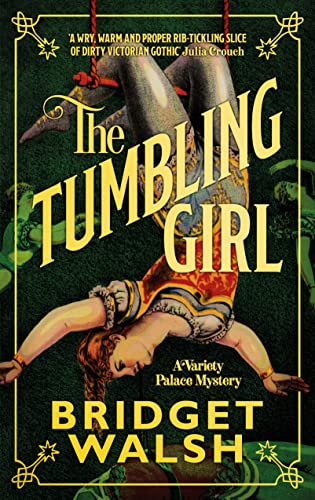The Tumbling Girl (Variety Palace Mysteries)
London, 1876: in the first of Walsh’s Variety Palace mysteries, Minnie Ward, a plainspoken magician’s assistant turned music hall scriptwriter, vows to solve the squalid murder of her best friend Rose, enlisting the help of the private detective and former boxer Albert Easterbrook. London is stalked by the notorious Hairpin Killer, whose modus operandi perplexingly resembles religious iconography. However, a different body count rises, and the existential threat to Minnie grows with it. Her world reeks of greasepaint, stale tobacco and oysters, and is populated by characters J. B. Priestley would have been proud of: the Mexican Boneless wonder is ‘as drunk as a boiled owl’, a plate spinner smashes more than she spins and a soprano sounds like ‘a cat pissing in a can.’ One could imagine the theatrical impresario ‘Tansie’ Tansford being played by the late Bob Hoskins. Walsh’s research has been thorough; not least, she knows an impressive amount about prize-fighting.
Stanhope lens rings are an integral part of the plot. A reference to another kind of ring – a pollution ring – is eye-watering. A sumptuous, decadent interior recalls Leighton House, down to the stuffed peacock, and one character’s predilection for taking photographs of muscular female servants echoes Arthur Munby. Actual historical figures, like Nelly Power, are referenced, but invented ones were so convincing I found myself googling them. Dialogue is sprightly and funny, as in ‘That bleedin’ monkey. I can’t tell you what I caught him doing with Dandy Bob’s ventriloquist dummy.’ There is a deliciously unexpected twist at the end – but of course the clues were there all along – and a promise of a case yet to be solved, in Ward and Easterbrook’s next outing.










